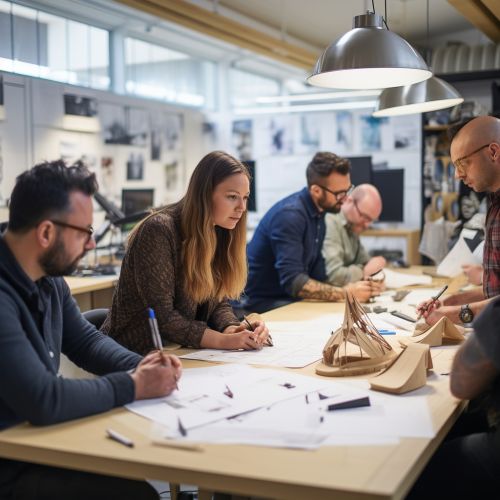Design
Introduction
Design is a broad and multifaceted discipline that encompasses a wide range of different fields and practices. It involves the creation of plans or specifications for the construction of objects, systems, or measurable human interactionsread more. In its most general sense, design can be seen as an activity that translates an idea into a blueprint for something useful, whether it's a product, a process, a system, or a service.


History of Design
The history of design is as old as human civilization itself. From the earliest cave paintings to the most sophisticated digital interfaces of today, design has always been a fundamental part of human expression and communication. The history of design can be traced back to the ancient civilizations of Egypt, Greece, and Rome, where design was used in the creation of everything from buildings and sculptures to tools and weaponsread more.
Principles of Design
Design is guided by a set of fundamental principles that serve as a framework for the creation of any design work. These principles include balance, contrast, emphasis, movement, pattern, rhythm, and unity. Each of these principles plays a crucial role in determining the overall effectiveness and aesthetic appeal of a designread more.
Types of Design
There are numerous types of design, each with its own unique focus and methodology. Some of the most common types of design include graphic design, industrial design, interior design, fashion design, architectural design, and digital design. Each of these fields has its own unique set of tools, techniques, and principles that guide the design processread more.
Design Process
The design process is a structured approach to creating a design. It typically involves a series of steps that include defining the problem, researching and gathering information, brainstorming and generating ideas, prototyping, testing, and finally, implementing the design. The design process is iterative, meaning that it often involves multiple rounds of testing and refinement before the final design is achievedread more.
Role of Design in Society
Design plays a crucial role in society. It shapes the physical environment in which we live, influences our perceptions and experiences, and helps to solve problems and improve our quality of life. Design is also a powerful tool for communication, allowing us to convey complex ideas and messages in a visual and tangible wayread more.
Future of Design
The future of design is being shaped by a number of emerging trends and technologies. These include the increasing use of artificial intelligence in design, the rise of sustainable and socially responsible design practices, and the growing importance of user experience design in the digital realm. These trends are not only changing the way designers work, but also the role of design in society and the impact it has on our everyday livesread more.
